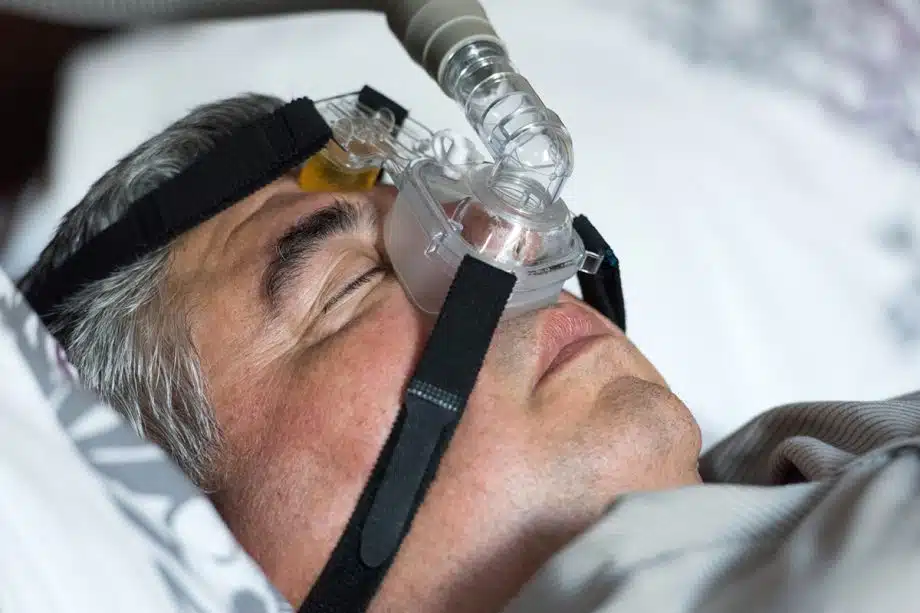As parents, we want nothing more than to see our children healthy, happy, and well-rested. But what happens when those peaceful nights of sleep aren't as restorative as they should be? Sleep apnea in children is more common than many Syosset families realize, and the warning signs can be subtle yet significant. We understand how concerning it can be when you notice changes in your child's sleep patterns or behavior, and we're here to help you recognize the signs that shouldn't be overlooked.
Sleep apnea occurs when breathing repeatedly stops and starts during sleep, disrupting the natural sleep cycle and preventing your child from getting the quality rest they need. Unlike adult sleep apnea, which is often linked to weight issues, childhood sleep apnea frequently stems from enlarged tonsils, adenoids, or other structural factors. When left untreated, this condition can impact your child's growth, learning, and overall well-being. Let's explore the key warning signs that every parent should be aware of.
Nighttime Symptoms That Demand Attention
The most obvious signs of sleep apnea occur during sleep itself, though they might not always wake your child completely. We encourage parents to occasionally observe their children while they sleep, especially if you have concerns. Loud, persistent snoring is often the first red flag, particularly when it's accompanied by gasping, choking, or periods where breathing seems to stop entirely. You might notice your child struggling to breathe, with their chest working harder than normal or their breathing appearing labored.
Restless sleep is another telltale sign we see frequently in our young patients. Children with sleep apnea often toss and turn throughout the night, sleep in unusual positions (like with their neck hyperextended), or frequently kick off their covers. Night sweats, despite a comfortable room temperature, can also indicate that your child's body is working overtime during what should be restful hours. Some children may experience bedwetting that persists beyond the typical age or suddenly returns after being successfully potty-trained.
Daytime Behaviors That Signal Sleep Disruption
What happens at night doesn't stay at night when it comes to sleep apnea. We often hear from concerned parents about dramatic changes in their child's daytime behavior and performance. Excessive daytime sleepiness is a major indicator, especially when your child seems tired despite spending adequate time in bed. You might notice them falling asleep during car rides, while watching TV, or even during quiet activities at home.
Academic and behavioral changes are equally important warning signs that we take seriously. Children with untreated sleep apnea may experience difficulty concentrating, memory problems, or a sudden drop in school performance. Some children become hyperactive or exhibit ADHD-like symptoms, while others may seem withdrawn, irritable, or emotionally volatile. These changes often puzzle parents and teachers alike, as they can appear suddenly and seem unrelated to sleep. We've seen many families find relief when addressing the underlying sleep disorder, leading to improvements in both behavior and academic performance.
Physical Signs and Growth Concerns
Sleep apnea can manifest in various physical ways that caring parents like you might notice during routine activities. Mouth breathing, especially during the day, is a significant indicator that your child may not be getting proper airflow through their nasal passages at night. You might observe that your child's mouth is frequently open, or they may complain of having a dry mouth, especially in the morning.
Growth and development concerns are particularly important to address early. Children with sleep apnea may experience slower growth rates because growth hormone is primarily released during deep sleep stages. If your child seems smaller than their peers or if their pediatrician has noted slower growth patterns, sleep quality should be considered as a contributing factor. Additionally, we often see children with sleep apnea who have enlarged tonsils or adenoids, frequent ear infections, or chronic nasal congestion. These structural issues can create a cycle where breathing difficulties worsen sleep quality, which in turn can impact immune function and overall health.
Taking Action for Your Child's Health
Recognizing these warning signs is the first step toward helping your child get the restorative sleep they deserve. We know it can feel overwhelming to consider that your child might have a sleep disorder, but please know that sleep apnea in children is highly treatable when diagnosed properly. The sooner we can identify and address these issues, the better the outcomes for your child's health, development, and quality of life.
If you've noticed any of these warning signs in your child, we encourage you to trust your parental instincts and seek professional evaluation. A comprehensive assessment can help determine whether sleep apnea is affecting your child and what treatment options would be most beneficial. Remember, you're not just investing in better sleep – you're investing in your child's overall health, academic success, and emotional well-being. Together, we can work toward ensuring your child gets the peaceful, restorative sleep that's essential for their growing body and mind.
Frequently Asked Questions
At what age can children develop sleep apnea?
Sleep apnea can affect children of any age, from infants to teenagers. However, we most commonly see it in children between ages 3 and 6, when tonsils and adenoids are typically at their largest relative to the child's airway size. The good news is that children's bodies are still growing and developing, which often means treatment options can be very effective. If you notice warning signs at any age, it's worth having your child evaluated rather than waiting to see if they'll "grow out of it."
How is sleep apnea in children different from adult sleep apnea?
Children's sleep apnea often presents quite differently from what we see in adults. While adults with sleep apnea are frequently overweight and experience obvious breathing interruptions, children may be of normal weight and show more subtle signs. In children, enlarged tonsils and adenoids are the most common cause, rather than excess tissue blocking the airway. Children are also more likely to show behavioral and academic symptoms rather than the excessive daytime sleepiness that adults typically experience. This is why it's so important for parents to be aware of the full range of symptoms that can indicate a sleep breathing disorder.
At Barkoff Dental we take the overall health of our patients into consideration, including our youngest patients. By improving oral health, we also improve general wellness and quality of life. If you have concerns about your child's sleep or would like to discuss treatment options, please don't hesitate to contact us for a consultation.

